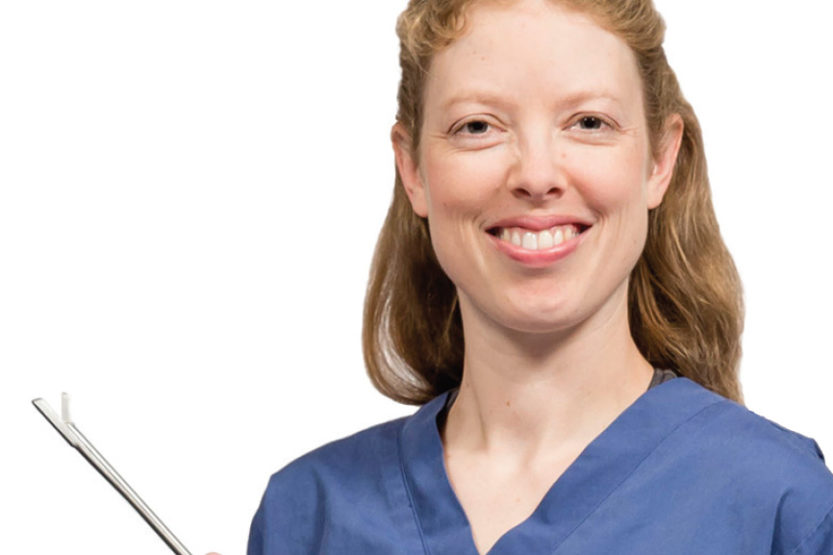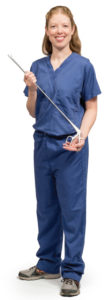In Class: Horse Doc
 Veterinary surgeon and researcher Annette McCoy. (Image by L. Brian Stauffer)
Veterinary surgeon and researcher Annette McCoy. (Image by L. Brian Stauffer) The veterinary medical degree program at Illinois has a unique curriculum. It’s one of the things we’re known for. The first- and second-year classes are mostly basic sciences—anatomy, histology, pathology—all the “ologies.” But students also rotate through the clinics for eight weeks. One of the things they like most is the opportunity to participate in the clinics early in the program.
Most of our training focuses on fundamental surgical techniques. Very few of our students will actually perform abdominal surgery on a horse. But many of them will be in small-animal practices doing routine surgical procedures, which will require those overarching concepts.
Orthopedically, probably the most common procedure we do on horses is arthroscopy, a minimally invasive procedure where we go into a joint. This is exactly what would happen if you needed to have your knee examined by an orthopedic surgeon. We can perform many of the same procedures that are done on small animals or even in human medicine—our toys are just bigger.
We operate in a big, open room. Take your standard small-animal surgery suite, and then multiply that by three. The biggest difference is the hoist system in the ceiling. Once the horses are asleep, we place hobbles on them and hook them to a two-ton hoist. Next, we winch them up in the air, set them on a table, roll the table into surgery, do the surgery, winch them up again, put them into recovery and then winch them back down again.
We can’t fix some things in horses because the biomaterial technology isn’t there. We don’t have plates that are strong enough to fix a femur fracture in a horse because you can’t tell it, “Stay in bed for the next eight weeks.” They have to be able to stand up.
Some people say that a surgeon is just a mechanic for people and animals—we just go in and fix what’s wrong using fancy tools. But as mentors, we can really make a difference in what a student ends up doing in his or her career. And that’s pretty exciting.
When I was 12, I decided I wanted to be a veterinarian. There was no good reason. I didn’t grow up on a farm. I wasn’t even allowed to have pets for the first 12 years of my life.
I’ve always liked science. Answering questions such as: Why does this happen? How can we fix it? How can we make it better?
I do genetics research. One of the diseases that I have current studies on is osteochondrosis. It occurs in the long bones—in the legs—when the cartilage at the end doesn’t turn into bone correctly and leaves a weak spot behind. Repetitive trauma or a single traumatic event can cause a break in that piece of weakened bone and cartilage. This disease affects people, too. Kids can get chips in their joints that have to be taken out surgically, the same way horses do. Horses are a good model for the disease in humans. Our hope is that by finding the genetic risk factors, we can identify high risk.
Edited and condensed from an interview conducted on June 3, 2016.


